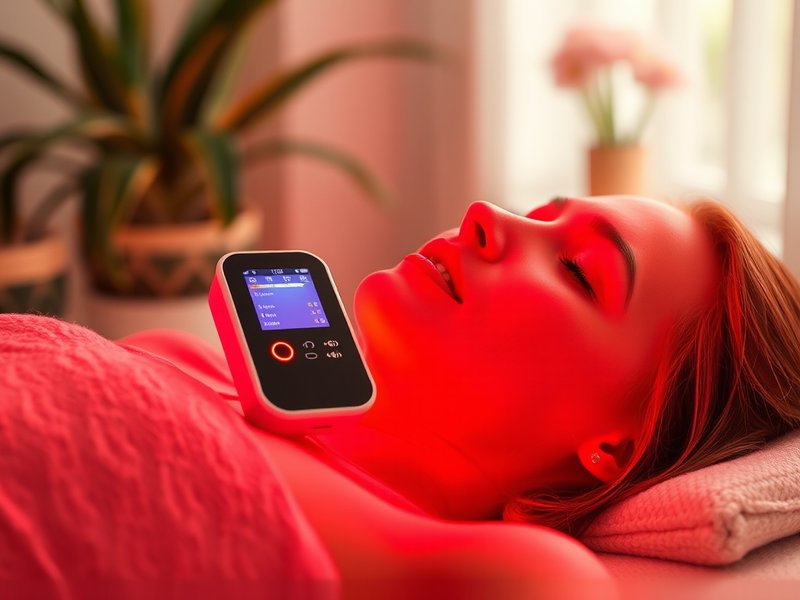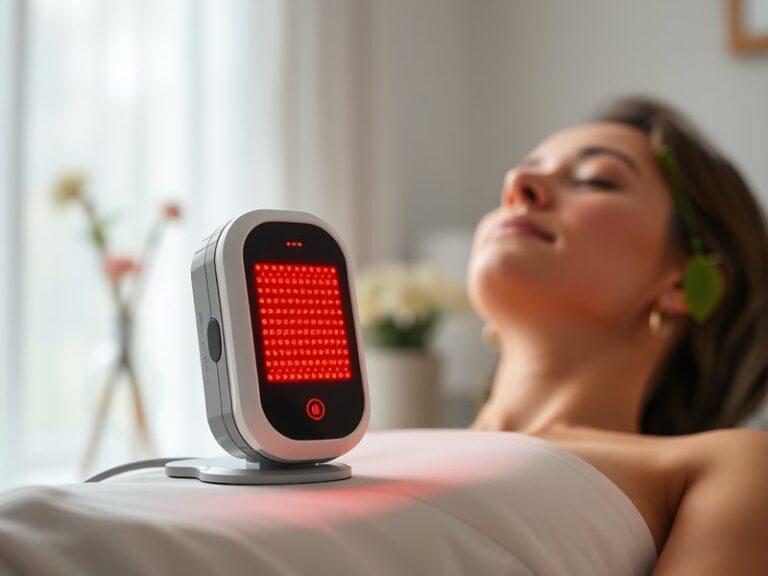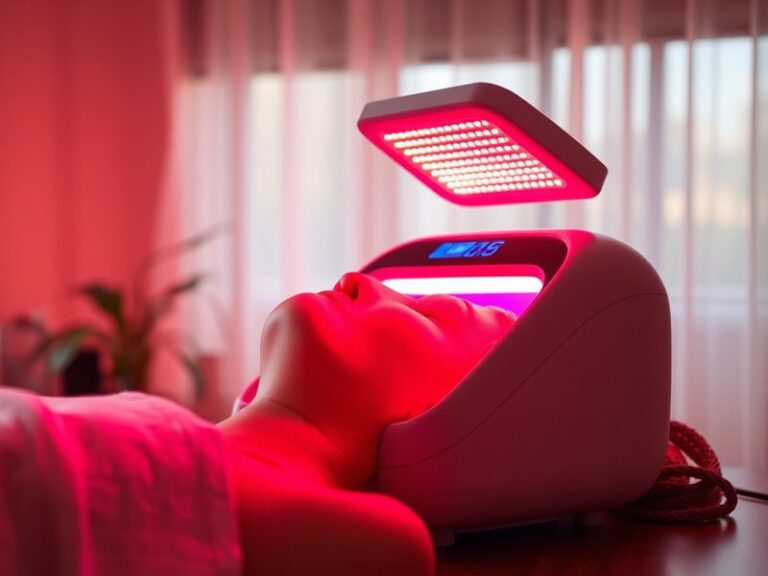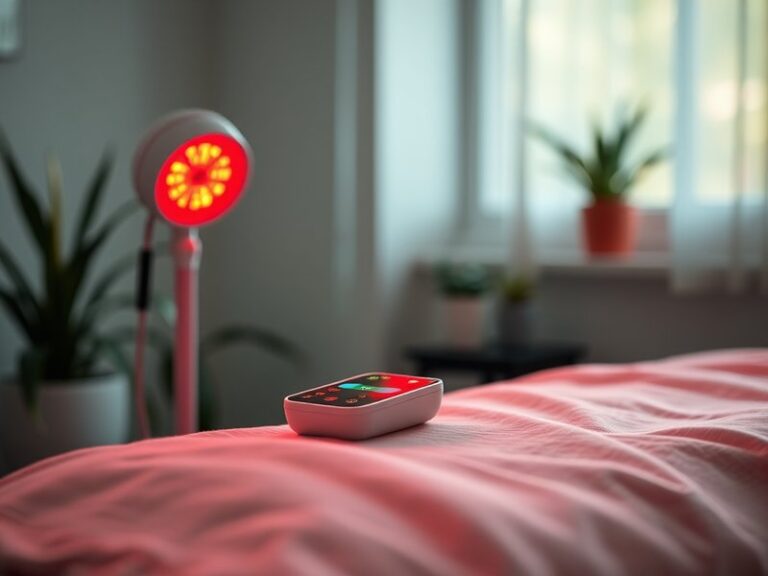Are There Any Side Effects To Red Light Therapy?
Are There Any Side Effects To Red Light Therapy?
Have you ever wondered if red light therapy is completely safe or if it carries any hidden risks? As the popularity of red light therapy continues to grow for various health and skin benefits, many users are left contemplating its safety and potential side effects.
This article will explore the potential side effects of red light therapy, highlighting its benefits, considerations to keep in mind, and alternatives available to those seeking similar results without the possible drawbacks.
Key Takeaways
- Red light therapy is generally considered safe but may have minor side effects.
- Common side effects can include mild redness or irritation of the skin.
- Consultation with a healthcare provider can ensure safe usage tailored to individual health conditions.
What is Red Light Therapy?
Red light therapy (RLT), also known as low-level laser therapy (LLLT), is a non-invasive treatment that uses specific wavelengths of light, primarily in the red and near-infrared spectrum, to promote healing and rejuvenation in the body. This technique harnesses energy from light to stimulate cellular function, encouraging tissue repair, reducing inflammation, and promoting overall health.
Primarily utilized in dermatology, physical therapy, and wellness industries, red light therapy has gained traction as a means to address skin related conditions, such as acne, wrinkles, and scars, as well as for pain management and recovery from injuries.
Find out everything in Red Light Therapy Safety
What are the Benefits of Red Light Therapy?
Engaging in red light therapy presents an array of benefits, particularly for skin health and physical recovery. Below are some prominent advantages of using this therapy.
Skin Rejuvenation
Studies have shown that red light therapy can stimulate collagen production and enhance skin elasticity, effectively reducing wrinkles and fine lines. Many users report a more youthful appearance after a series of treatments.
Wound Healing and Tissue Repair
RLT is known to accelerate the body’s natural healing processes. It increases blood circulation, which can enhance nutrient delivery to damaged tissues, thus speeding up recovery from injuries and wounds.
Pain Relief and Inflammation Reduction
For those suffering from chronic pain conditions, red light therapy can provide relief by reducing inflammation and promoting cellular repair, making it beneficial for conditions like arthritis and muscle strains.
Enhancement of Mood and Sleep Quality
Research suggests that exposure to red light can improve circadian rhythms and boost mood by influencing melatonin production, thereby enhancing sleep quality.
Is it Possible to Experience Side Effects with Red Light Therapy?
While red light therapy is largely considered safe, some individuals may experience mild side effects. Awareness of these potential issues is essential for proper usage.
What are the Advantages of Being Informed?
Understanding possible side effects allows users to adjust their therapy sessions appropriately. It also ensures that individuals can respond quickly to any adverse reactions that may arise, optimizing the treatment experience.
What are the Disadvantages of Ignoring Potential Side Effects?
Failing to acknowledge side effects could lead to unnecessary discomfort or complications. Users might also experience dissatisfaction with results if minor irritations are overlooked or misattributed to the therapy.
What are the Things to Consider Before Starting Red Light Therapy?
Before jumping into red light therapy sessions, there are several important considerations to keep in mind.
Health Conditions
Individuals with specific medical conditions—such as those with light sensitivity, certain skin disorders, or those using photosensitizing medications—should consult a healthcare professional to avoid potential adverse reactions.
Duration and Frequency of Sessions
The length and frequency of red light therapy sessions can significantly impact results. Overexposure may lead to skin irritation, so finding the right balance is crucial.
Type of Device Used
Different devices may offer varying wavelengths and intensities of light, leading to different outcomes. It’s essential to select a reliable device or treatment provider to ensure efficacy and safety.
What are the Alternatives to Red Light Therapy?
Alternatives exist for those who may wish to explore other options for skin improvement or pain relief.
Phototherapy
Phototherapy, or light therapy, utilizes ultraviolet light to treat skin conditions, including psoriasis and eczema. It can provide similar benefits to red light therapy but should be approached with caution due to potential side effects from UV exposure.
Microneedling
This cosmetic procedure involves using tiny needles to create micro-injuries in the skin, prompting collagen production and skin rejuvenation. Though it may cause more immediate discomfort, results can be impressive.
Topical Treatments
Various creams and serums containing active ingredients like retinoids and peptides can deliver anti-aging and healing benefits without the need for light exposure. These options can be tailored to individual skin types for targeted results.
Conclusion: Is it Recommended to Try Red Light Therapy?
Red light therapy offers numerous benefits and is primarily safe for most individuals. However, awareness of potential side effects and proper usage is essential for optimized results. Consulting with a healthcare professional can help tailor the experience to ensure safety and efficacy, making red light therapy a worthwhile consideration for those looking to improve skin health or alleviate pain.
Frequently Asked Questions
Is red light therapy safe for everyone?
While red light therapy is generally safe, individuals with certain medical conditions or skin sensitivities should consult a healthcare professional before starting treatment.
Get insights from Can a red light bulb be used for therapy?
How long do the effects of red light therapy last?
Results can vary, but many users report visible improvements after several weeks of consistent therapy, with effects potentially lasting as long as they continue regular treatments or maintenance.
Are the side effects of red light therapy permanent?
Most side effects, such as minor redness or irritation, are temporary and usually resolve shortly after treatment.
Can I perform red light therapy at home?
Yes, there are many at-home devices available. However, it’s crucial to choose high-quality devices and follow instructions carefully to maximize benefits and minimize risks.
How often should I schedule red light therapy sessions?
The recommended frequency can vary depending on the intended use—typically, a few times per week is beneficial; however, consult a professional for personalized advice based on your specific needs and goals.






